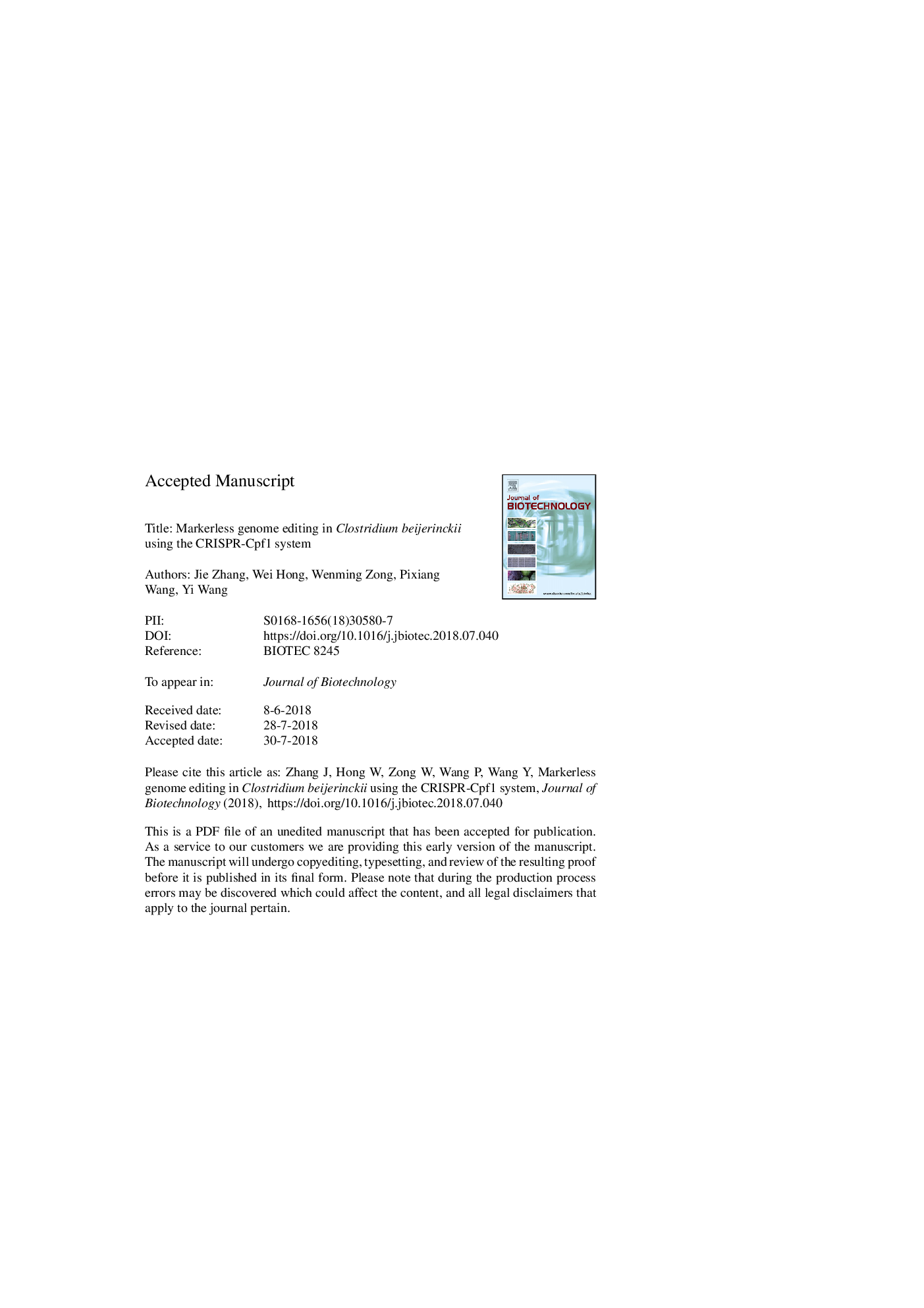| Article ID | Journal | Published Year | Pages | File Type |
|---|---|---|---|---|
| 6490107 | Journal of Biotechnology | 2018 | 17 Pages |
Abstract
CRISPR-Cpf1 is a type V CRISPR system that has recently been exploited for genome engineering purposes. Compared to the well-known Streptococcus pyogenes CRISPR-Cas9 system, the effector protein Cpf1 recognizes T-rich protospacer-adjacent motif (PAM) instead of G-rich PAM (used by CRISPR-Cas9), which could offer a substantial expansion of the existing genetic toolbox for genome editing. In this study, we report the implementation of the Acidaminococcus sp. Cpf1 (AsCpf1) for markerless genome engineering in Clostridium beijerinckii, a prominent species for biosolvent production through the well-known Acetone-Butanol-Ethanol (ABE) pathway. A lactose inducible promoter was used to control the expression of AsCpf1 to decrease its toxicity, while a constitutive small RNA promoter was employed to drive the expression of pre-crRNA. A One-Step-Assembly (OSA) approach was employed to construct the CRISPR-Cpf1-based vector in one single step, which simplified and streamlined the plasmid construction process. Using the customized CRISPR-Cpf1 system, we successfully deleted spo0A and pta genes in C. beijerinckii, with an editing efficiency of up to 100%. Altogether, our results demonstrated the easy programmability and high efficiency of the CRISPR-Cpf1 system for versatile genome engineering purposes. This study provides valuable guidance and essential references for repurposing the CRISPR-Cpf1 system for genome engineering in other microorganisms.
Related Topics
Physical Sciences and Engineering
Chemical Engineering
Bioengineering
Authors
Jie Zhang, Wei Hong, Wenming Zong, Pixiang Wang, Yi Wang,
